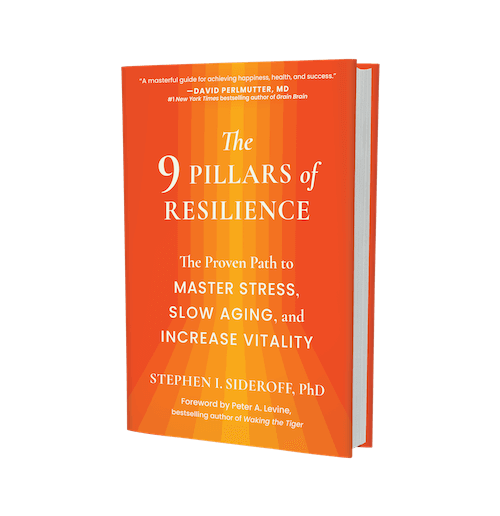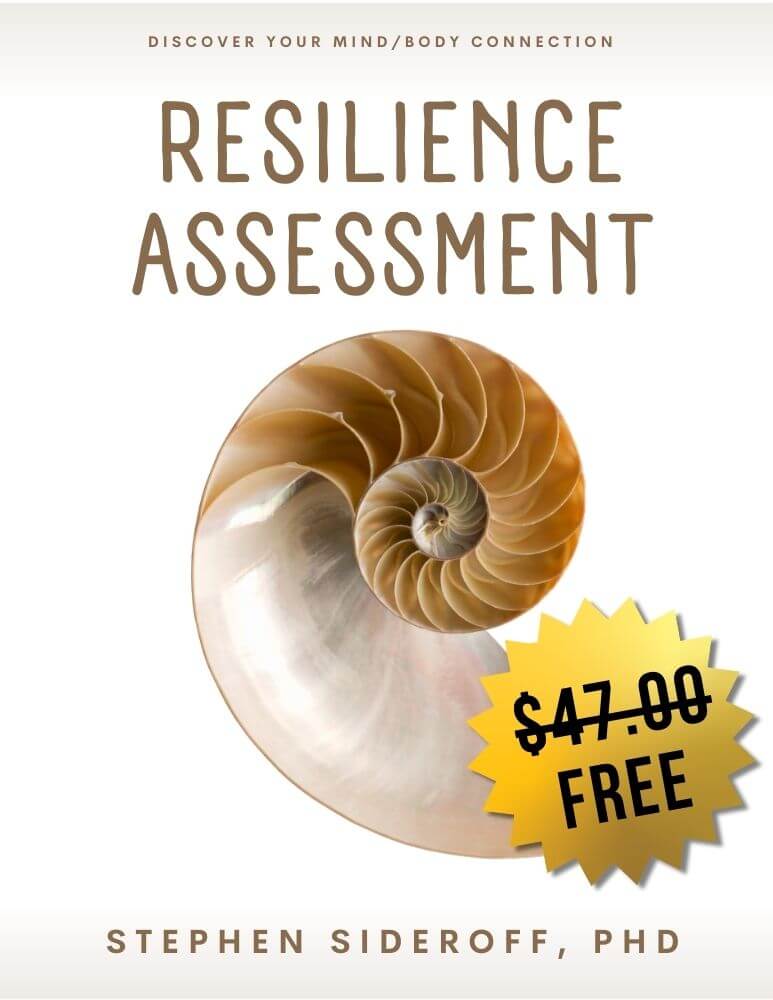Embrace joy for enhanced physical and emotional health.

I have been counseling the importance of your relationship with yourself as a key component of resilience. In fact, I’ve identified this relationship as your first of my Nine Pillars of Resilience and Success. While we typically treat ourselves critically and even negatively, I’ve identified five qualities that are a must in how we relate to ourselves. These characteristics of a healthy relationship and indeed of a healthy internal voice are coming from a place of love, compassion, acceptance, support, and self-care. If you use these keys to ground yourself, it will result in greater life satisfaction. Recently I’ve decided I needed to add one more quality to this approach to self: joy.
Escaping the gravitational pull of survival mode or escaping the survival mindset
The need for the inclusion of a focus on joy in our lives and in how we treat ourselves is to counter a common tendency most of us are susceptible to. This is a mindset, a remnant of the evolutionary emphasis on survival, that has us scanning our environment for danger and what can go wrong. It is an approach that is magnified by a stressful or difficult childhood and causes us to anticipate problems or dangers in our day. If, at the end of the day, nothing has gone wrong, this actually reinforces the negative mindset approach. As my early mentor, D.O. Hebb said, “Neurons that fire together, wire together.”1
This mindset is a focus on business, on what must be done, and on what can go wrong as a way of starting off the day and continuing throughout the day. This results in a perspective or framework of life that limits us to the bottom half of life’s experiences—where the midpoint is not good but not bad. When the goal is to arrive at the end of the day at this midpoint—nothing bad happened—it limits the possibility of living “above the line” or, as I would say, the area of joy and happiness.
Consider these examples:
Deborah, a client of mine, was always struggling to get unstuck and to gain positive momentum in her life. It wasn’t that she was either suffering or not doing OK. She just wasn’t thriving and getting past recurring obstacles. Deborah was a hard worker. She started each day by identifying goals and going after them.
But there was a part of her pattern that I’ve come to realize is a prescription for staying on the treadmill and struggling with true happiness: Deborah was focused on the lower half of life. She started her day worrying about what could go wrong. She anticipated encountering some unexpected problems or a curveball thrown at her. At the end of the day, she was able to breathe a sigh of relief, as she got through another day without a mishap or unforeseen problem. She felt safe, but with no joy or experience of happiness throughout her day.
John’s presenting problem was always feeling somewhat depressed. He, too, was competent and in a good job. He had a girlfriend, and they were thinking about getting married. But John was always nervous that a problem would arise that he wouldn’t be able to handle. This made him anxious. Again, his success in getting through the day without anything major going wrong reinforced this negative mindset. In fact, it inhibited any other approach, as he was reluctant to let go of one that was, at least in part, working for him.
What Deborah and John had in common was their focus on the lower half of life’s possibilities, where winding up at the midpoint—I got through the day without a problem—was a success. Where our mind goes, we tend to follow.
And here is where adding joy to the goals of a healthy internal voice comes in. When you set your mind to experiencing joy, along with love and acceptance, you raise your sights up into the top half of life’s experiences. If I begin looking for joy in my day, in my life, I then look for ways to experience this positive emotion and, thus, I’m more likely to find it.
The benefits and biochemistry of joy and laughter
The Dalai Lama has said that the purpose of life is to be happy.2 And who can argue with that? But many people I speak to feel they must work very hard and make sure that no dangers will befall them before they can change their focus to being happy. The problem with this framework is that “stuff” always gets in the way of finding happiness. You can’t separate business, work, and getting things done from joy and happiness. The experience of positive emotions, feelings, and affect are fundamental building blocks for cultivating resilience, flourishing, vitality, and life satisfaction, which ultimately contribute to physical and emotional well-being. This allows you to be more effective in dealing with your business. In fact, joy and positive emotions may result in greater longevity and healthspan.
Research has demonstrated that these positive emotions release key neurotransmitters that have positive effects on our mood and health. For example, joy and happiness release endorphins, our body’s natural painkillers, and serotonin, our natural antidepressant.3 Researchers also found that joy was associated with increased levels of dopamine in the frontal lobes. A better mood translates into being more present and, thus, functioning and performing better.

Now let me challenge you to go one step further. Beyond positive emotions and joy, I am also encouraging you to engage in and find more opportunities for laughter. A long time ago, Norman Cousins used laughter, watching comedies such as the Marx Brothers, to, as he put it, “cure myself of an illness that doctors were unable to help with.” On a physical level, laughter moves lymph fluid around your body simply by the convulsions you experience when you laugh. Therefore, it boosts immune system function and helps clear out old toxins from organs and tissue in your body. The process also increases oxygenation of your cells—also, a healthy process.
And, finally, laughter decreases cortisol, the stress hormone. This can result in better management of the effects of stress, such as elevated blood pressure, as well as enhancing the functioning of the immune system and reducing the risk of heart disease.
It’s time to focus and live in the top half of life, allowing nature to work its magic
People are looking everywhere for relief from depression and anxiety and simply the stresses of life. We look for a pill to make it better and help us feel either OK or better. We have a billion-dollar industry supplying us with supplements and other health procedures. But we should all begin with what nature has to offer us. And we can produce it ourselves.
I encourage you to live “above the line.” There are many important ways our minds work. If you start your day with the intention of finding joy and laughter, it will help ensure living in the top half of life. Smile, laugh, and find ways to experience joy. Live above the line.
References
1. Hebb, D.O. The Organization of Behavior. 1949. Wiley, New York
2. Dalai Lama, https://www.dalailama.com/messages/transcripts-and-interviews/the-purpo…
3. Fei Liang, Rou Feng, Simeng Gu, Shan Jiang, Xia Zhang, Naling Li, Minghong Xu, Yiyuan Tang, Fushun Wang, “Neurotransmitters and Electrophysiological Changes Might Work as Biomarkers for Diagnosing Affective Disorders”, Disease Markers, vol. 2021, Article ID 9116502, 12 pages, 2021. https://doi.org/10.1155/2021/9116502

